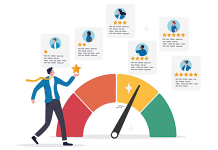A lot of us are enjoying limited face-to-face interaction again, and we’d like more. Whether it’s meeting colleagues around the water cooler or meeting new sales accounts at an event, we look forward to additional in-person collaboration and connection.
For others, virtual events are a gateway to something better. Working parents don’t have to choose between lengthy business travel and staying home with their families. Companies with teams spread across the country now have an exciting (and cost-saving) means of connecting their colleagues.
We’re excited to return to normal, but the reality is our “normal” has changed. Virtual events are here to stay, and that creates the need to reevaluate our meetings and events strategy. Conventional wisdom is that business interactions will include a mix of virtual and in-person events, and even in-person events will likely have a virtual element.
As you start planning your virtual meeting or event, watch out for these common mistakes.
Inviting everyone on your list
Being able to quickly scale up your virtual meeting or event to accommodate more people is a big advantage over in-person events. But just because you can invite more people to your virtual meeting or event doesn’t mean you should. Even with virtual meetings or events, bigger isn’t always better. More virtual attendees could negatively impact the overall experience and it could increase your overall event costs. Don’t lose sight of the basics of event planning. Make sure you’ve defined your target audience well so you can meet your goals and objectives.
Being boring
As important as it is to captivate in-person audiences, it might be even more imperative for virtual attendees, especially when a second computer screen is within reach and the refrigerator is steps away.
Exceptional content is still the best way to engage and inspire your audiences. But your in-person content does not always transition easily to a virtual setting. Our attention spans are much shorter when we’re watching something virtually. Limit keynote presentations to 20 minutes, allow for plenty of stretch breaks, and create opportunities for fun with giveaways, quizzes or trivia games.
Not being memorable
What do you remember about the last in-person meeting or event you attended? Was it the connections you made? Perhaps it was the free food or swag? Or, was it the high-quality entertainment? You can replicate these experiential elements in your virtual event, too.
Consider sending your attendees an event-in-a-box with items carefully curated to connect them to the content being presented. Rally your early morning event attendees with a coffee break courtesy of a Starbucks e-card you sent in advance. Conduct group yoga or breathing breaks throughout the event to stimulate the brain. Or, simply include intimate roundtable discussions throughout the presentation to increase collaboration and connectedness.
Too scared of tech
Just because the format is different doesn’t mean it’s scary. Don’t worry about the “what ifs.” Instead, plan ahead and let the technology work to your advantage. Virtual event platforms allow you to offer live and prerecorded sessions, breakout rooms and chatrooms, and even polling functionality and in-session Q&As. Imagine the possibilities!
Virtual events allow marketers to gather more measurement data than ever before. You can track participation levels prior to, during and after the virtual meeting and event. Because of the technology, it’s easier to determine what sessions registrants attended and how long they stayed, what types of sessions had the most engagement (networking, chat rooms, breakouts, etc.), and even who downloaded collateral or watched sessions on demand.
Poor deadline management
Virtual meetings and events have less flexible timelines than their in-person counterparts. A good rule-of-thumb is to assume your live date is one week before your actual program. This gives you ample time to upload all materials and set your rehearsal and recording schedules. You’ll also want extra time to test the platform and conduct a pre-production call with your presenters to review the technology and ensure the remote connection is strong.
A virtual meeting and event might be new to you, but the same event planning skills you already have still apply. Don’t be intimidated by virtual events. Instead, flawlessly plan and execute them, and be amazed at just how engaged your audiences really are.




